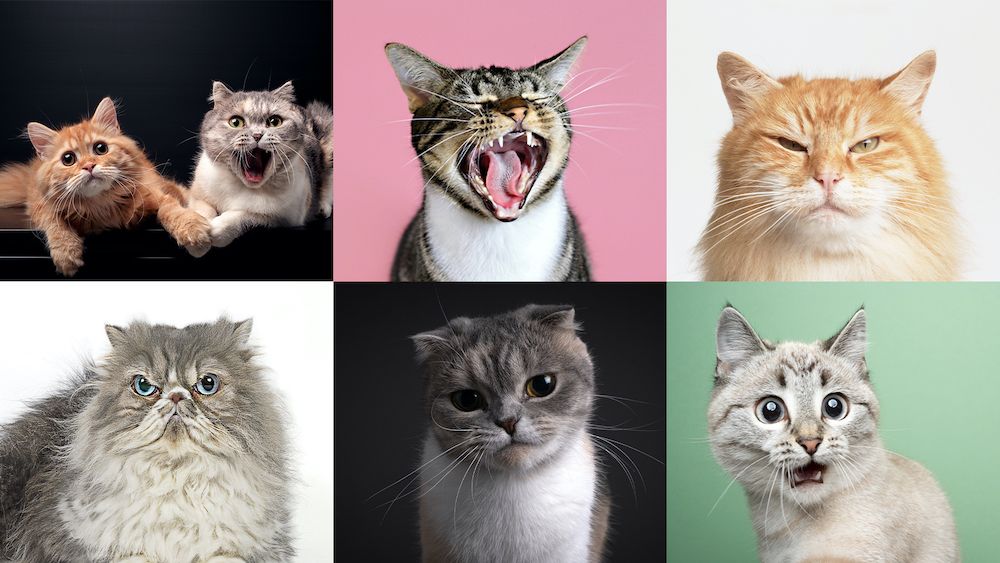Forget “raining cats and dogs,” it’s raining cats’ expressions.
Perched on a weathered windowsill, a stray cat observes the frenetic urban scene below as dawn breaks over the city. Amidst the morning hustle, a hurried worker dashes past, a whirlwind of transient facial expressions.
With eyes seemingly decoding the unspoken language of human turmoil, the cat watches with a blend of curiosity and, perhaps, feline sagacity.
The unexpected moment of connection between the harried worker and the stray cat serves as a silent acknowledgment of life’s chaotic dance, a brief pause amid the daily frenzy.
Puzzled by the sudden shift in the cat’s demeanor from friendly to aloof as he approaches, the worker marvels at the feline’s ability to convey such a wide range of expressions.
Enter a recent research study.
Published in Behavioural Processes this month, researchers identified 276 distinct facial expressions in cats, conveying emotions from aggression to friendliness. Over their millennia-long association with humans, our feline companions have seemingly developed this diverse repertoire of sneers, smiles, and grimaces.
While chimpanzees may boast 357 facial expressions, cats exhibit 276 expressions towards one another, according to Brittany Florkiewicz, one of the study’s authors.
Each expression is composed of a combination of around four of 26 different facial movements, including parted mouths, widened or narrowed eyes, blinks, lip corner pulls, nose licks, whisker movements, and ear placements.
Humans, in contrast, have about 44 distinct facial movements, while dogs can make at least 27 different expressions.
The study’s authors noted that most of the cats’ expressions were either clearly friendly (45 percent) or clearly aggressive (37 percent), with the remaining 18 percent being ambiguous.
Despite these findings, Florkiewicz acknowledges that deciphering the true meaning behind cats’ expressions remains a challenge.
However, a general rule suggests that cats will orient their ears and whiskers towards friendly companions and away from hostile ones. Pupil constriction and lip-licking are common physiological responses to competitive situations.
Daniel Mills, a veterinary behaviorist at the University of Lincoln, emphasizes that cats, often misconstrued as solitary creatures, actually exhibit a rich array of facial expressions, suggesting a social aspect to their behavior.
Furthermore, similarities between cats’ friendly expressions and those of humans, dogs, primates, and other animals hint at a shared “play face,” according to Mills.
While researchers have yet to compare their findings with those of wild felines, they speculate that domestic cats may have retained some protective communication from their wild ancestors while acquiring pleasant expressions from interactions with humans over time.




